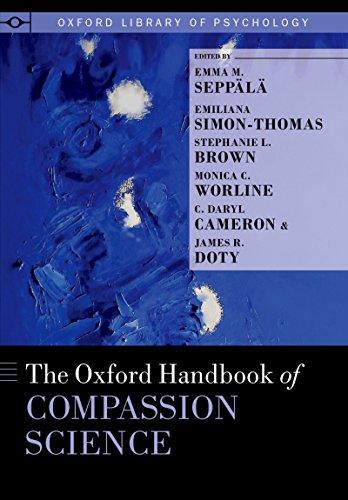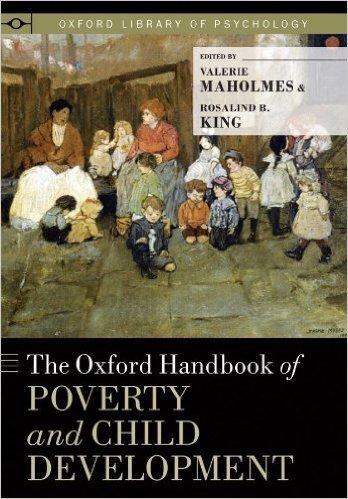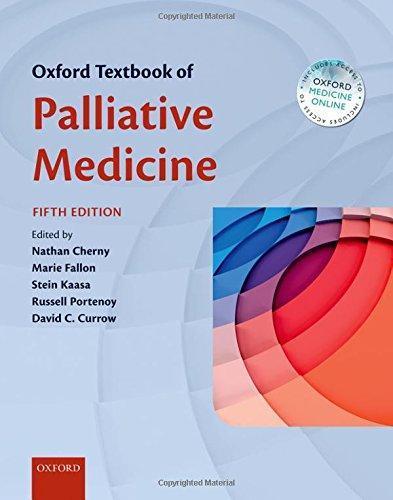CONTRIBUTORS
Jonathan S. Abramowitz
University of North Carolina at Chapel Hill
Chapel Hill, NC, USA
Thomas M. Achenbach
University of Vermont Burlington, VT, USA
Awais Aftab
Case Western Reserve University
Cleveland, OH, USA
Grace N. Anderson
Fordham University
Bronx, NY, USA
Jessica Balderas
University of Kansas Lawrence, KS, USA
Konrad Banicki
Jagiellonian University
Kraków, Poland
Richard P. Bentall
University of Sheffield Sheffield, UK
Bridget M. Bertoldi
Florida State University
Tallahassee, FL, USA
Lampros Bisdounis
University of Oxford Oxford, UK
Linda Booij
McGill University
Montreal, QC, Canada
Theo K. Bouman
University of Groningen
Groningen, The Netherlands
Laura Bringmann
University of Groningen
Groningen, The Netherlands
Sandra A. Brown
University of California
San Diego, CA, USA
Ty Brumback
Northern Kentucky University
Highland Heights, KY, USA
James M. Cantor
Toronto Sexuality Centre
Toronto, Canada
Lisa Chung
Virginia Commonwealth University Richmond, VA, USA
Dante Cicchetti
University of Minnesota Minneapolis, MN, USA
W. E. Conlin
University of Missouri
Columbia, MO, USA
Christopher C. Conway Fordham University Bronx, NY, USA
Victoria Cosgrove
Stanford University Stanford, CA, USA
Bruce N. Cuthbert
National Institute of Mental Health
Bethesda, MD, USA
Stephanie N. DeCross
Harvard University
Cambridge, MA, USA
Caroline Demro
University of Minnesota Minneapolis, MN, USA
Alyson Dodd
Northumbria University
Newcastle-upon-Tyne, UK
Laura E. Drislane
Sam Houston State University Huntsville, TX, USA
Sunny J. Dutra
William James College Boston, MA, USA
Markus Eronen
University of Groningen
Groningen, The Netherlands
Colin A. Espie
University of Oxford Oxford, UK
Bridget K. Freihart
University of Texas Austin, TX, USA
Colin D. Freilich
University of Minnesota Minneapolis, MN, USA
Joe Fulton
University of Kansas Lawrence, KS, USA
June Gruber
University of Colorado at Boulder Boulder, CO, USA
Constanze Hausteiner-Wiehle
Berufsgenossenschaftliche Unfallklinik Murnau
Murnau am Staffelsee, Germany
Marieke Helmich
University of Groningen
Groningen, The Netherlands
Peter Henningsen
Technische Universität München Munich, Germany
Johanna Hepp
Heidelberg University Mannheim, Germany
Elizabeth A. Hill
University of Oxford Oxford, UK
Stephen P. Hinshaw
University of California Berkeley, CA, USA
Kelsey A. Hobbs
University of Minnesota Minneapolis, MN, USA
Jill M. Hooley
Harvard University Cambridge, MA, USA
Christopher J. Hopwood
University of Zurich Zurich, Switzerland
Stevi G. Ibonie
University of Colorado Boulder, CO, USA
Rick E. Ingram
University of Kansas Lawrence, KS, USA
Piyumi Nimna Kahawage
Swinburne University of Technology Melbourne, Australia
Jared W. Keeley
Virginia Commonwealth University Richmond, VA, USA
Kendall Khonle
University of Kansas Lawrence, KS, USA
Christopher Kleva
Virginia Commonwealth University Richmond, VA, USA
Amanda M. Kramer
Northwestern University Evanston, IL, USA
Robert F. Krueger
University of Minnesota Minneapolis, MN, USA
Simon D. Kyle
University of Oxford Oxford, UK
Mark F. Lenzenweger
The State University of New York at Binghamton Binghamton, NY and Weill Cornell Medical College New York, NY, USA
Kelsey L. Lowman
Florida State University Tallahassee, FL, USA
Angus MacDonald III University of Minnesota Minneapolis, MN, USA
Richard J. McNally
Harvard University Cambridge, MA, USA
Cindy M. Meston
University of Texas Austin, TX, USA
Thomas D. Meyer
University of Texas Houston, TX, USA
Gregory A. Miller
University of California at Los Angeles
Los Angeles, CA, USA
Greg Murray Swinburne University of Technology Melbourne, Australia
Siri Noordermeer
Vrije Universiteit Amsterdam, The Netherlands
Robin Nusslock
Northwestern University Evanston, IL, USA
Jaap Oosterlaan
Vrije Universiteit
Amsterdam, The Netherlands and
Amsterdam UMC
Amsterdam, The Netherlands
Christopher J. Patrick
Florida State University
Tallahassee, FL, USA
Kevin Pelphrey University of Virginia Charlottesville, VA, USA
R. O. Pihl
McGill University
Montreal, QC, Canada
Aaron L. Pincus
Pennsylvania State University University Park, PA, USA
Charles Sanislow Wesleyan University Middletown, CT, USA
Kate E. A. Saunders
University of Oxford Oxford, UK
Madison R. Schmidt
Northwestern University Evanston, IL, USA
Kenneth J. Sher University of Missouri Columbia, MO, USA
Amelia M. Stanton University of Texas Austin, TX, USA
Kasey Stanton
University of Wyoming Laramie, WY, USA
Howard Steiger
McGill University Montreal, QC, Canada
Annie St-Hilaire
McGill University
Montreal, QC, Canada
Lea Thaler
McGill University Montreal, QC, Canada
Timothy J. Trull University of Missouri Columbia, MO, USA
Uma Vaidyanathan Boehringer-Ingelheim Washington, DC, USA
Cynthia M. Villanueva University of Colorado at Boulder Boulder, CO, USA
Manuel Voelkle Humboldt-Universität zu Berlin
Berlin, Germany
Fred R. Volkmar
Yale University New Haven, CT, USA
Alexander L. Williams
Northwestern University Evanston, IL, USA
Eric A. Youngstrom University of North Carolina Chapel Hill, NC, USA
Peter Zachar
Auburn University Montgomery Montgomery, AL, USA
Johannes Zimmermann University of Kassel Kassel, Germany
Richard E. Zinbarg
Northwestern University Evanston, IL, USA
1 Classification in Traditional Nosologies
Jared W. Keeley, Lisa Chung, and Christopher Kleva
Diagnosis is simple. The clinician meets with the patient and assesses his or her symptoms in an interview. Given the list of symptoms, the clinician then consults the current version of the DSM or ICD and decides which diagnoses are relevant. However, like most things that appear to be simple, the topic of classification becomes more complicated upon examination. For example, even the name for this topic is more complicated that many readers might think. In popular usage, terms like diagnosis, classification, taxonomy, and nosology are often treated as if they either are synonyms or, at least, are largely interchangeable. However, to those who study this topic, these four terms have separable meanings.
Diagnostic systems, generally called classifications, are lists of terms for conventionally accepted concepts that are used to describe psychopathology. Classification, when the term is used specifically, refers to the activity of forming groups. Diagnosis, as this word is used in medicine and the mental health field, is the process by which individuals are assigned to already existing groups. Taxonomy is a term usually reserved for the study of how groups are formed. In effect, taxonomy is a meta-level concept that looks at different theoretical ways in which classifications can be organized, studied, and changed. Nosology is the specific application of taxonomy (which can apply to chemistry, zoology, or how to best arrange products in the grocery store) in the context of medical sciences. The classification of mental disorders has a lengthy history. The first description of a specific syndrome is usually ascribed to an Egyptian account of dementia dating to about 3000 bce. An early classification of mental disorders was found in the Ayurveda, an ancient Indian system of medicine (Menninger et al., 1963). Ancient Greek and Egyptian writings refer to disorders remarkably similar to concepts of hysteria, paranoia, mania, and melancholia. Since then, numerous classifications
have emerged, and enthusiasm for classifying mental disorders has waxed and waned. During the last half of the twentieth century, classification was a prominent theme in the study of psychopathology. Following World War II and the foundation of the United Nations, the World Health Organization (WHO) took over responsibility for managing international health classification systems, resulting in the sixth edition of the International Classification of Diseases and Related Health Conditions (ICD) published in 1948, which including mental disorders for the first time. The release of the ICD-6 corresponded to the development of the first edition of the Diagnostic and Statistical Manual of Mental Disorders (DSM) in the United States, first published in 1952, in recognition of a need for a unified system in the United States (Grob, 1991; Houts, 2000). Currently, DSM is in its fifth edition and the ICD is in its 11th edition.
This productivity has not, however, resolved some of the fundamental problems confronting psychiatric classification. Unresolved issues include the nature of the entities being classified, the definition of what is a mental disorder, the nosological principles for organizing psychiatric classifications,
Abbreviations
AD autistic disorder
AMPD alternative model of personality disorders
ASD autism spectrum disorder
CDD childhood disintegrative disorder
FFM five factor model
LAF low anxiety fearlessness
NOS not otherwise specified
PCL- R Psychopathy Checklist— Revised
RDoC Research Domain Criteria
SCID Structured clinical interview for DSM
the distinction between normality and pathology, and the validity of many diagnoses. Controversies exist regarding the definition and logical status of some diagnoses and even whether some entities are pathological conditions. For example, heated debates occurred in the 1960s and 1970s over whether homosexuality should be considered a mental disorder. Current debates exist on whether Internet addiction belongs in an official classification. Presently, there is no consensus regarding the taxonomic principles for resolving these controversies (Kamens et al., 2019).
This chapter provides an overview of some issues associated with the classification of psychopathology in traditional nosologies. The next chapter (“Historical and Philosophical Considerations in Studying Psychopathology”) will address modern alternatives to the nosological approaches discussed in this chapter. In discussing these issues, the chapter presents an overview of psychiatric classification from a historical perspective so that the reader can understand how these issues have arisen and who have been the central authors involved in discussions of these issues.
Purpose of Classification
Classification involves creating and defining the boundaries of concepts (Sartorius, 1990). Through this process, diagnostic entities are defined (Kendell, 1975) and the boundaries of the discipline are ultimately established. The reason that psychiatric classification has had such an impact is that it has defined the field of psychopathology. For example, should Alzheimer’s disease, alcoholism, or oppositional behavior in a child be considered mental disorders? Should they instead be considered medical disorders or just problems of everyday living? A classification of mental disorders stipulates the range of problems to which mental health professions lay claim.
Classifications serve several purposes with specific goals. The goals of a good classification scheme include (1) providing a nomenclature for practitioners, (2) serving as a basis for organizing and retrieving information, (3) describing the common patterns of symptom presentation, (4) providing the basis for prediction, (5) forming the basis for the development of theories, and (6) serving sociopolitical functions
The first major function of a classification is the provision of a standard nomenclature that facilitates description and communication. A nomenclature is simply a list of names or terms within a classification system. At its most basic level, a classification
of psychopathology allows clinicians to talk to each other about the “things” in their world: the patients and clients who seek the care of mental health professionals. Without a classification system, clinicians would be reduced to talking about clients one after another without any way of grouping these clients into similar types. A classification allows the clinician to have a set of nouns that can be used to provide an overview of the clinician’s world when talking to other clinicians, laypeople, insurance companies, or other professionals. Note that this purpose provides a shorthand and does not imply or require any scientific reality to the concepts.
Second, a classification structures information retrieval. Information in a science is organized around its major concepts. Knowing a diagnostic concept helps the clinician to retrieve information about such matters as etiology, treatment, and prognosis. A classification shapes the way information is organized thereby influencing all aspects of clinical practice and research. In the current world, in which information is easily retrieved by electronic searches on the Internet, classificatory concepts are useful devices by which professionals, family members, clients, and interested laypeople can obtain information about the prognosis, treatment, and current research related to various mental disorders.
Third, by providing a nomenclature to describe all levels of psychopathology, a classification establishes the descriptive basis for a science of psychopathology. Most sciences have their origins in description. Only when phenomena are systematically organized is a science in the position to transform accounts of individual cases into principles and generalizations. Cases that are diagnosed with a particular disorder should be similar in important ways to other cases with that same diagnosis, and these cases should be different in important ways from cases belonging to other diagnoses.
The fourth goal of classification, prediction, is the most pragmatic from the perspective of clinicians. What a mental health professional typically wants from a diagnosis is information that is relevant to the most effective treatment and management of his or her patient. A classification that is useful for prediction is a system in which there is strong evidence that patients with different diagnoses respond differentially to a specific treatment or one that informs how to best manage the nature of that person’s condition. Classifications are also clinically useful if the categories are associated with different clinical courses even when the disorders are not treated.
Fifth, by providing systematic descriptions of phenomena, a classification establishes the foundations for the development of theories. In the natural sciences, especially biology and chemistry, a satisfactory classification was an important precursor for theoretical progress (Hull, 1988). The systematic classification of species by Linnaeus stimulated important questions about the nature of phenomena or processes that accounted for the system— questions that ultimately led to the theory of evolution. For these reasons, classification occupies a central role in research. For example, the National Institute of Mental Health (NIMH) in the United States has instituted a large-scale project designed to identify common pathological mechanisms that could guide informed understanding of mental disorders (termed the Research Domain Criteria [RDoC] project; NIMH, 2012). The RDoC will be discussed at greater length in the next chapter as an alternative to traditional classifications.
Finally, no classification system exists in a vacuum. Rather, a classificatory system exists in a context of groups and individuals that stand to benefit from the classification. For example, a classification of mental disorders can serve the social purpose of identifying a subset of the population that society has deemed need treatment. However, the sociopolitical functions of a classification are not always so altruistic. The American Psychiatric Association, through its production of the various editions of the DSM, has developed a lucrative printing business that serves as a major funding source for the organization (Frances, 2014). At a more individual level, some authors have argued that the classification of mental disorders serves the objective of maintaining the social power of the majority by marginalizing and stigmatizing those people who fall under the domain of “mental illness” (e.g., Kirk & Kutchins, 1992; Kutchins & Kirk, 1997).
History of Classification
Although attempts to classify psychopathology date to ancient times, our intent is to provide only a brief overview of major developments, especially those occurring in the past century, as a context for understanding modern classifications. Examining previous classifications shows that many current issues have a long history. For example, writers in the eighteenth century, like many contemporary authorities, believed that the biological sciences had solved the problems of classification and that biological taxonomies could serve as a model for classifying psychopathology. The Edinburgh physician
William Cullen, for example, applied Linnaeus’s principles for classifying species to illnesses. The result, published in 1769, was a complex structure involving classes, orders, genera, and species of illness (cited by Kendell, 1990). One class was neurosis (Cullen introduced the concept as a general term for mental disorders) that was subdivided into 4 orders, 27 genera, and more than 100 species. Contemporaneous critics, who believed that there were far fewer diagnoses, dismissed Cullen as a “botanical nosologist” (Kendell, 1990). Nonetheless, interest in applying the principles of biological classification to abnormal behavior continues today, as does the debate over the number of diagnoses. “Splitters” seek to divide mental disorders into increasingly narrowly defined categories, whereas “lumpers” maintain that a few broadly defined categories are adequate to represent psychopathology (Havens, 1985). One compromise is to create a hierarchical solution (again, similar to biology) in which there are a relatively small number of higher order groups divided into more specific varieties at lower levels of the hierarchy.
The features used to classify mental disorders varied substantially across eighteenth- and nineteenth-century classifications. Some diagnoses were little more than single symptoms, whereas others were broader descriptions resembling syndromes. Yet other diagnoses were based on speculative, early pre-psychology theories about how the mind worked. As a result, many classifications from the nineteenth century relied heavily on traditional philosophical analyses of the faculties or attempted to organize disorders around poorly articulated views of etiology.
Kraepelin
With the work of Emil Kraepelin, the structure of modern classification began to take shape. Kraepelin was born in 1856, the same year as Sigmund Freud, an ironic fact considering that they established two very different approaches to conceptualizing psychopathology. Kraepelin was influenced by two traditions (Berrios & Hauser, 1988). The first was the scientific approach to medicine that dominated German medical schools in the late nineteenth century. Many important medical breakthroughs, especially in bacteriology, occurred in Germany during that period. German psychiatrists of the time generally believed that mental disorders were biological and that psychiatry would gradually be replaced by neurology. Kraepelin was also influenced by early work in experimental psychology (Kahn, 1959).
During his medical training, he worked for a year in the laboratory of Wilhelm Wundt (1832–1920), one of the first experimental psychologists. In early research, Kraepelin applied Wundt’s methods to the study of mental disorders.
Kraepelin’s reputation was based on his textbooks of psychiatry. Like most textbook authors, Kraepelin organized his volumes with chapters on each of the major groupings of mental disorders. What has become known as Kraepelin’s classifications (Menninger et al., 1963) are little more than the table of contents to the nine published editions of his textbooks. In the sixth edition, Kraepelin included two chapters that attracted considerable international attention. One chapter focused on the concept of dementia praecox (now called schizophrenia) which included hebephrenia, catatonia, and paranoia as subtypes—descriptions that remained intact up through ICD-10 and DSM-IV but were removed in the current editions. The other chapter discussed manic-depressive insanity—a revolutionary idea that combined mania and melancholia, two concepts that had been considered separate entities since the writings of Hippocrates. The two diagnoses, dementia praecox and manicdepressive psychosis, established a fundamental distinction between psychotic and mood disorders that forms a linchpin of contemporary classifications.
The Early Editions of the DSM and ICD
In medicine, the official classification of medical disorders is the ICD, published by the WHO. Historically, this classification began at the end of the nineteenth century when a group named the International Statistical Institute commissioned a committee headed by Jacques Bertillon (1851–1922) to generate a classification of causes of death. This classification, initially known as The Bertillon Classification of Causes of Death, was adopted as an official international classification of medical disorders at a meeting of 26 countries in France in 1900. The name of the classification was slightly modified in the early 1900s to The International Classification of Causes of Death. This original version of ICD was revised at subsequent conferences held in 1909, 1920, 1929, and 1938 (Reed et al., 2016).
After World War II, the WHO met to generate a sixth revision of this classification. A decision was made at that point to expand the classification beyond causes of death and to include all diseases regardless of whether those diseases led to death or not (i.e., morbidity as well as mortality). The name of the classification was revised accordingly to the
International Statistical Classification of Diseases, Injuries, and Causes of Death, Sixth Revision (ICD6; World Health Organization, 1948). Because it focused on all diseases, ICD-6 added a section devoted to mental disorders.
The undertaking and consequent publication of the ICD-6 by the WHO “marked the beginning of a new era in international vital and health statistics” (Reed et al., 2016). The WHO recognized the importance of agreed-upon international rules for mortality and morbidity data. An essential component to ensure success was international cooperation by other countries, recommending that governments establish their own national committees to collect vital and health statistics. The national committees were to communicate with the WHO, which would serve as the central source and governing body for international health statistics.
Shortly after the publication of ICD-6, the American Psychiatric Association published its first official classification of mental disorders (DSM-I; American Psychiatric Association [APA], 1952). The creation of this classification was justified because there were four different classifications of psychopathology in use in the United States during World War II, a situation that American psychiatry found embarrassing. Thus, the United States created its own nomenclature that blended features of the previous four systems (Grob, 1991).
Generally, other countries in the world were like the United States in that, instead of adopting ICD-6 as the official system, most decided to use locally created classificatory systems whose diagnostic concepts did not have international acceptance. Only five countries adopted the ICD-6 classification of mental disorders: Finland, New Zealand, Peru, Thailand, and the United Kingdom. To understand why, the WHO asked British psychiatrist Erwin Stengel to review the classifications of mental disorders used in various countries. Stengel’s review (1959) was very important because he carefully documented the widespread differences that existed in terminology from country to country (and even within countries). Stengel concluded that the variation in classifications from one country to another meant there was a failure for these systems to become useful nomenclatures. In addition, Stengel documented how different subsections of these classifications were organized according to quite variable beliefs about the etiologies of the disorders being classified. Stengel suggested that the solution was to develop a classification that simply provided operational definitions of mental disorders
without reference to etiology. This suggestion led to the eighth revision of the mental disorders section of ICD (World Health Organization, 1968), which was to include a glossary defining the various components of psychopathology to go with the list of diagnoses. Unfortunately, the glossary was not ultimately included. However, at the same time, American psychiatrists did publish a second edition of DSM (i.e., DSM-II; APA, 1968). DSM-II, unlike ICD-8, contained short prose definitions of the basic categories in this system; however, the diagnostic terms and structure were otherwise almost identical.
Criticisms of Classifications Through the
1960s
During the 1950s and 1960s, concern about the reliability of psychiatric diagnoses surfaced. Problems with levels of diagnostic agreement had been noted in the 1930s. Masserman and Carmichael (1938), for example, reported that 40% of diagnoses in a series of patients followed up 1 year later required major revision. Ash (1949) compared the diagnoses of three psychiatrists who jointly interviewed 52 individuals applying to work for the Central Intelligence Agency (CIA). These clinicians agreed on the diagnosis for only 20% of the applicants, and, in 30% of the cases, all three psychiatrists made a different diagnosis. Beck (1962) reviewed a series of reliability studies and reported that the highest level of interclinician agreement was 42% for DSM-I. The problem with reliability was further highlighted by the UK/US Diagnostic Project, which found major differences in diagnostic practice between Britain and the United States (Cooper et al., 1972; Kendell et al., 1971). These studies suggested that Americans had an overinclusive concept of schizophrenia and tended to apply the diagnosis to any psychotic patient. British psychiatrists, in contrast, were more specific in the use of schizophrenia as a diagnosis. These differences probably stemmed from both differences in the definition of schizophrenia as well as its application by individual psychiatrists.
Diagnostic unreliability creates major problems for clinical practice and research. For example, the results of studies on patients with schizophrenia as diagnosed in Britain cannot generalize to patients diagnosed as having schizophrenia in the United States if these results are based on different applications of the concept of schizophrenia. However, the problem was not confined to schizophrenia. The reliability studies of the 1960s and 1970s were interpreted as indicating that clinicians had
problems achieving high levels of agreement for any area of psychopathology. More modern commentators on this literature have suggested, however, that the criticisms of diagnostic reliability during this era were overstated (Kirk & Kutchins, 1992).
Concurrent with the empirical studies questioning the reliability of psychiatric diagnosis, psychiatry came under considerable attack from the antipsychiatry movement. Much of this criticism focused on the clinical activities of diagnosis and classification. Szasz (1961) went so far as to argue that mental illness was a myth.
By the late 1960s, three major criticisms of psychiatric classification were popular. First, psychiatric diagnosis was widely thought to be unreliable. Second, classification and diagnosis were considered fundamental components of the medical model that was questioned as the basis for understanding mental disorders. This model clashed with other models, particularly those stemming from behavioral and humanistic perspectives that were influential in clinical and counseling psychology. The medical model of illness was viewed as both speculative and as demeaning of patients. Third, widespread concern was expressed, particularly among many sociologists and psychologists, about the labeling and stigmatizing effects of psychiatric diagnoses (Goffman, 1959, 1963; Scheff, 1966, 1975).
Labeling theorists tended to view mental illness and other forms of deviant behavior as largely politically defined and reinforced by social factors and agencies. Psychiatric diagnoses were considered to be self-fulfilling prophecies in which patients adopted the behaviors implied by the label. Their arguments were bolstered by philosophers such as Foucault (1988), who condemned psychiatry as little more than an agent of social control.
A demonstration of these issues was contained in a paper published in Science by Rosenhan (1973), titled “On Being Sane in Insane Places.” In this study, 8 normal persons sought admission to 12 different inpatient psychiatry units. All accurately reported information about themselves except that they gave false names to avoid a mental hospital record, and they reported hearing an auditory hallucination in which a voice said “thud,” “empty,” or “hollow.” In all instances, the pseudo-patients were admitted. Eleven of these admissions were diagnosed as schizophrenia, the other as mania. On discharge, which occurred on average 20 days later, all received the diagnosis of schizophrenia in remission. Rosenhan concluded that mental health professionals were unable to distinguish between sanity and
insanity, an observation that was eagerly seized by the antipsychiatry movement. However, the Rosenhan study was not without its critics. Rosenhan’s paper resulted in an explosion of responses that challenged his research and claimed that psychiatric diagnosing is a valid and meaningful process. The majority of the criticisms focused on Rosenhan’s flawed methodology and his unfounded interpretations that clinicians are unable to distinguish between those who are sane and those who are insane (Farber, 1975; Millon, 1975; Spitzer, 1975; Weiner, 1975).
The Neo-Kraepelinians
During the 1970s, a small but effective group of researchers emerged in North American psychiatry (Compton & Guze, 1995). These individuals influenced both academic psychiatry and practice. The movement, usually referred to as the neo-Kraepelinians (Klerman, 1978), sought to reaffirm psychiatry as a branch of medicine. The neo-Kraepelinians emphasized the importance of diagnosis and classification. The movement was a reaction to the antipsychiatrists and the psychoanalytic dominance of North American psychiatry. Klerman’s assumptions of the neo-Kraepelinian positions included emphasizing the medical roots of psychiatry, such that psychiatry provides treatment for people who are sick with mental illness. Klerman further highlighted that the biological aspect of mental illness should be the central focus, and any area of psychopathology that might represent a disease process (e.g., schizophrenia) belonged to psychiatry, whereas other areas could be assigned to ancillary professions such as psychology, social work, and nursing. The neo-Kraepelinians, in the attempt to medicalize psychiatric disorders, emphasized qualitative distinctions between normality and illness, a view criticized by writers such as Szasz, who considered mental disorders to be problems of living that are on a continuum with normal behavior. Furthermore, the position of the neo-Kraepelinians suggested different forms of disorders, which laid the basis for the continued use of a categorical approach to classification.
The neo-Kraepelinians believed that psychiatry should be founded on scientific knowledge. This assumption insisted on a solid empirical foundation to ensure psychiatry as a medical specialty. The neo-Kraepelinians placed additional emphasis on diagnosis and classification by proposing that diagnosis is the basis for treatment decisions and clinical care—a view that contrasted with that of psychoanalysts, who believed that descriptive classification
focused on superficial behavioral aspects of patients’ lives (Havens, 1981). Klerman stressed the importance the neo-Kraepelinians placed on improving the reliability and validity of diagnoses through the use of statistical techniques.
Reading these propositions more than 50 years later reveals the extent to which the neo-Kraepelinians felt the need to reaffirm the medical and biological aspects of psychiatry. They felt embattled and surrounded by powerful influences that advocated a very different approach. These propositions now seem curiously dated, perhaps indicating the extent to which the neo-Kraepelinian movement was successful in achieving its objectives. In many ways these propositions are now widely accepted within the profession, although most would probably express these positions less vehemently. Klerman’s statements also indicated the importance that the neoKraepelinians placed on diagnosis and classification. The way to ensure that their views were adopted was to develop a new classification system. The antipsychiatry movement’s concerns about labeling and other negative reactions to psychiatric diagnosis provided an important context that spawned DSM-III (APA, 1980), but the neo-Kraepelinian movement provided the agenda (Rogler, 1997).
DSM-III and Its Successors
DSM-III was the culmination of the neoKraepelinian efforts to reestablish psychiatry as a branch of medicine with diagnosis and classification as fundamental components. The classification took more than 5 years of extensive committee work and consultation to produce.
DSM-III differed from DSM-II in four major ways. First, DSM-III adopted more specific and detailed diagnostic criteria, as compared to DSMII, in order to define the various categories of mental disorders. If a patient met the diagnostic criteria, then the patient was said to belong to the category. Before DSM-III, most definitions of specific mental disorders were in prose format and implicitly referred to the “essence” of the disorder. Since the publication of DSM-III, the use of diagnostic criteria has reflected a shift to a prototype model whereby a category is defined not by a list of necessary and sufficient conditions but rather by a list of characteristics that any individual member may or may not have. Thus, two individuals may qualify for the same diagnosis even though they have few symptoms in common as long as each of them has enough of the listed symptoms to attain the specified threshold. The more characteristics
the individual evidences, the better fit that person is to the category (Cantor et al., 1980). The intent of using these diagnostic criteria was to make the diagnostic process more explicit and clear-cut, thus improving reliability. Second, DSM-III proposed a multiaxial system of classification. Thus, instead of assigning one diagnosis per patient, as was typical with DSM-I and DSM-II, clinicians were expected to categorize the patients along five axes: (I) symptom picture, (II) personality style, (III) medical disorder, (IV) environmental stressors, and (V) role impairment. Third, DSM-III substantially reorganized the hierarchical arrangement of mental disorder categories. In DSM-I and DSM-II, the hierarchical system of organization recognized two fundamental dichotomies: (1) organic versus nonorganic disorders and (2) psychotic versus neurotic disorders. DSM-III dropped these dichotomies and instead organized mental disorders under 17 major headings based on the phenomenology of the disorder (e.g., “mood disorder” or “psychotic disorder”). Fourth, DSM-III was a much larger document than its predecessors. DSM-I contained 108 categories and was 130 pages in length. In contrast, DSM-III had 256 categories and was 494 pages long. By almost any standard, DSM-III was an astounding success. Financially, it sold very well. As a result of this success, the American Psychiatric Association developed a publication arm of the organization that began to publish a large number of DSM-related books and other psychiatric works. Although explicitly an American classification, DSM-III quickly became popular in Europe, overshadowing the ICD-9 (1977), particularly among academics and researchers.
Another way of measuring the success of DSMIII is in terms of research. DSM-III stimulated a great deal of research, especially regarding the definitions of the categories proposed in this classification. As a result of this research, DSM-III-R (APA, 1987) was published with the explicit goal of revising the diagnostic criteria for the categories stemming from new research findings. However, like most committee products, the changes from DSMIII to DSM-III-R were not limited to diagnostic criteria. A number of new categories were introduced, including a group of diagnoses associated with the general category of “sleep disorders.” Additionally, many specific categories were revised (e.g., histrionic personality disorder), dropped (e.g., attention deficit disorder without hyperactivity), or added (e.g., premenstrual syndrome had its name changed and was added to an appendix of DSM-III-R).
Because of the revolutionary impact of DSMIII, the mental disorders section of ICD-10 (World Health Organization, 1992) was substantially changed relative to earlier ICDs. ICD-9, published in 1977, had been very similar to ICD-8. Hence, ICD-10 was published in two versions: a clinical version that contained prose descriptions of categories and a research version that contained diagnostic criteria. However, ICD-10 did not adopt a multiaxial system.
As work was progressing on ICD-10, a decision was made to perform another revision of DSM-III that, it was hoped, would make it more similar to ICD-10. Indeed, a special “harmonization” committee was established and work on the two manuals proceeded, to some degree, in parallel. The result was DSM-IV (APA, 1994). The committee work that went into the creation of DSM-IV was extensive. The American Psychiatric Association even sponsored special research projects that attempted to empirically resolve important debates that had arisen around classificatory issues. One example of such a research project was the 1999 DSM Research Planning Conference sponsored by the American Psychiatric Association and the NIMH. This conference established the research priorities for future DSM editions, which included addressing the continued dissatisfaction with the DSM nomenclature (Kupfer et al., 2002).
DSM-IV was larger than previous DSMs in terms of the sheer size of its publication and the number of categories. Interestingly, different commentators have computed different numbers for the total diagnoses in DSM-IV, ranging from just under 300 to just under 400 (cf. Follette & Houts, 1996; Kutchins & Kirk, 1997; Sarbin, 1997; Stone, 1997). Despite the intent of making DSMIV more like ICD-10, DSM-IV and ICD-10 are quite different. Of 176 diagnostic categories that shared similar names, there were intentional conceptual differences in 21% (First, 2009). However, there were unintentional nonconceptual differences in 78% of categories; only one disorder— transient tic disorder—was identical between the two systems (First, 2009). The most impactful difference between the two systems was the DSM-IV “clinical significance” criterion, which required the presence of distress and/or functional impairment for diagnosis. ICD-10 did not always consider the presence of distress and/or functional impairment a requirement (Reed et al., 2016). Additionally, the ICD-10 used diagnostic guidelines rather than criteria, which provided greater flexibility in their
interpretation and application than the DSM-IV descriptions.
In 2000, the American Psychiatric Association published a text revision of DSM-IV, titled DSMIV-TR, which updated the prose sections of the manual but left the diagnostic criteria and number of diagnoses mostly the same. Two exceptions included dropping the clinical significance criterion from the tic disorders and adjusting it to account for nonconsenting victims of paraphilic disorders (First & Pincus, 2002).
The current editions of DSM and ICD have undergone yet another revision. DSM-5 was published in May 2013; ICD-11 was approved in 2019. The co-chairs of DSM-5 hoped to make DSM-5 as revolutionary as DSM-III had been. The major changes that they instituted with DSM-5 were to add diagnostic spectra (e.g., the autism spectrum and the schizophrenia spectrum), offer dimensional alternatives or enhancements to categorical diagnosis (e.g., the five dimensions for describing personality disorder in Section III titled “Emerging Measures and Models”), improve the assessment of dysfunction as a result of psychopathology (the adoption of the WHO Disability Assessment Schedule [WHODAS] in place of the Global Assessment of Functioning [GAF], also in Section III), and drop the multiaxial approach to diagnosis that appeared in DSM-III and DSM-IV (all diagnoses are now in a single section of the manual instead of spread across five axes; APA, 2012a; 2013).
Just as DSM-III was partially driven by the attempt to overcome the reliability issues with DSM-I and DSM-II, one goal of DSM-5 was to address meta-structure issues that became prominent with DSM-III-R and DSM-IV (Regier et al., 2012). Specifically, the arrangement of disorders within the manual could be informed by empirical findings rather than based solely on phenomenological similarity or work group arrangement. An example is the dissolution of the childhood disorders grouping of DSM-IV, whereby some disorders were placed under a neurodevelopmental heading (e.g., intellectual disability, attention deficit hyperactivity disorder [ADHD], autism spectrum disorder) and others were placed with similar-appearing “adult” disorders (e.g., reactive attachment disorder in the trauma- and stressor-related disorders group).
In its final form, DSM-5 contained 584 diagnostic categories (compared to 357, by our count, in DSM-IV). The size of DSM-5 also grew to 947 pages from 886 pages in DSM-IV while the purchase cost of the manual more than doubled. In
contrast, the number of categories with diagnostic criteria was reduced from 201 in DSM-IV to 138 in DSM-5
With respect to the development of the ICD-11, the WHO focused on enhancing clinical utility and global applicability (Reed, 2010). They were dedicated to addressing the global mental health gap between those who need services and those who receive them, and they sought to develop the ICD11 as a mechanism for better identifying individuals with mental health needs. A three-step plan was developed to provide guidance for the structure of the Mental and Behavioral Disorders chapter in the ICD-11. The first step involved evaluating the scientific evidence and information regarding the actual use of the ICD in clinical practice, including two major surveys of psychiatrists and psychologists (Evans et al., 2013; Reed et al., 2011). The second step consisted of two field studies that examined how clinicians from around the world conceptualize mental disorders and their relation to one another (Reed et al., 2013; Roberts et al., 2012). These findings were used to inform the structure (or table of contents) of the manual. The third step involved two sets of field studies designed to evaluate the proposed diagnostic guidelines (Keeley et al., 2016). One evaluated how global mental health clinicians apply the guidelines to a set of case vignettes with the intent of identifying confusions or clarifications. The other examined reliability and feasibility in clinical settings. The development process also involved an attempt to synchronize the ICD-11 and DSM-5. It is important to note that any differences between the two systems were intentional. For example, there are distinct differences in regards to sleep disorders and sexual health and gender identity which ICD-11 justifies as being more consistent with current evidence and clinical practice (Reed et al., 2016).
Taxonomic Issues
A number of controversies have arisen around the classification of psychopathology. The purpose of the following list is not to provide a comprehensive overview but simply to list the issues and controversies that are frequently raised about psychiatric classification.
Classification of Syndromes, Disorders, or Diseases
The terms “syndrome,” “disorder,” and “disease” can (erroneously) be used interchangeably to describe mental health conditions. In fact, these
three terms refer to explicitly different assumptions about the nature of the category they describe. At the most basic level of description, a person experiences symptoms (self-reported issues) and evidences signs (observed by others) of a problem. As mentioned before, if mental health professionals were forced to idiosyncratically describe the unique pattern of symptoms and signs for every patient, their work would be hopelessly stymied by trying to account for each patient. However, symptoms and signs often co-occur. When they co-occur with sufficient frequency, that condition is termed a syndrome. Note that the concept of a syndrome does not include any assumptions about the cause of the condition or why those symptoms belong together. It is a purely descriptive notion.
A disorder, on the other hand, provides an additional level of description beyond that of a syndrome. A disorder is a pattern of symptoms and signs that includes an implied impact on the functioning of the individual. While some causal factors might be understood for a disorder, its etiology is still unclear or multiply determined. In contrast, a disease is a condition where the etiology is known, and the path from the causal agent to the symptoms and signs it causes is more or less clear.
By way of example, a condition known as general paresis was the most common single disorder represented in mental asylums in the mid to late 1800s. Initial investigations found that certain individuals exhibited similar symptoms: grandiose delusions and excitable behavior. At that point, the concept would properly be termed a syndrome. After further investigation, it became clear that these individuals followed a similar course. The problem began with excitable, grandiose behavior but progressed to degenerative muscle movements, paralysis, and eventually death. Once the course and outcome were known, general paresis was more properly termed a disorder. Many theories were posited about the cause of the disorder, varying from overindulgence in alcohol to inflammation of the meninges. However, eventually the discovery came that it was tertiary syphilis, having migrated from a genital infection through a long dormant phase to the central nervous system. When general paresis was understood as a syphilitic infection, the concept became a disease (Blashfield & Keeley, 2010).
The history of general paresis is important in classification because it was a mental disorder that was understood as a disease and eradicated with proper treatment (i.e., penicillin). Paresis was a major victory for the science of psychiatry, as the majority of
asylum patients could be successfully (and simply) treated and sent home. Many individuals believed that all other mental health conditions (especially schizophrenia) would follow similar developments, eventually being “cured” once the proper cause was known. Unfortunately, no other conditions to date have enjoyed the scientific success of general paresis. Rather, nearly all mental health categories are more properly termed “disorders,” in that their cause and therefore treatment are much more ambiguous.
Classification of Disorders Versus Classification of Individuals
On the surface, this controversy appears to be a somewhat simple-minded issue of terminology. Individual patients are diagnosed with various mental disorders. A classification system contains the names of mental disorders that have been recognized or are officially sanctioned as diagnoses by some governing body. What difference does it make whether a classification system is said to classify disorders or individuals?
Interestingly, however, the authors of DSMIV-TR did think that this distinction made a difference. They adopted an explicit position relative to this issue.
A common misconception is that a classification of mental disorders classifies people, when actually what are being classified are disorders that people have. For this reason, the text of the DSM-IV (as did the text of DSM-III-R) avoids the use of expressions such as “a schizophrenic” or “an alcoholic” and instead uses the more accurate, but admittedly more cumbersome, “an individual with Schizophrenia” or “an individual with Alcohol Dependence.” (APA, 2000, p. xxxi)
The DSM-IV-TR adopted this position to try to avoid the problem of stigma. Mental disorders largely refer to undesirable aspects of the human condition. Most of us do not want to be diagnosed with a mental disorder. To call someone “schizophrenic” is to imply that that individual is a member of a diagnostic category that is immutable, unchanging, and destructive both to that person and to the significant others in that person’s life. The contrasting language of “an individual with schizophrenia” implies that the person is not inherently schizophrenic, but that schizophrenia, being a disease of the brain, is something that happens to people without the occurrence of the disease being their fault. By saying that DSM is a classification of disorders, the authors were trying to emphasize the value of beneficence so that no or minimal harm
was done by assigning psychiatric diagnoses to individual human beings.
On the other hand, as mentioned at the beginning of this chapter, diagnosis is the process of assigning individuals to categories. Individual clinicians are concerned with the process of how best to characterize the individuals they see. The mental disorder groups characterized in a classification would not exist without individuals who instantiated those symptoms. Admittedly, the population of individuals with mental disorders is not permanent, as many mental disorders are time limited (a person initially does not have the disorder, then does, and goes back to not having it). The conditions that define the presence or absence of the disorder state become crucial to understanding if the classification captures individuals, disorders, or both. Thus, the definition of mental disorder has profound consequences for what the classification captures.
Definition of Mental Disorder
The definition of the domain to which a classification of mental disorders applies—that is, all mental disorders—is an important aspect of the classification. The early editions of the DSM and ICD did not provide any definition of a mental disorder. An attempt to define this concept was provided with DSM-III by the head of the task force that created this classification. Robert Spitzer’s view about how to define a mental disorder became controversial when he claimed “mental disorders are a subset of medical disorders” (Spitzer et al., 1977, p. 4). Many viewed this statement as an attempt to secure exclusive rights to mental disorder treatment for psychiatry, thereby excluding or marginalizing other disciplines such as psychology and social work. However, a psychologist on the DSM-III task force, Millon (1983), stated that this sentiment was never the official perspective of those creating DSM-III
One year later, Spitzer and Endicott (1978) made an explicit attempt to define both mental disorder and medical disorder, with the former being a subset of the latter. It is worth reproducing their definitions in toto
A medical disorder is a relatively distinct condition resulting from an organismic dysfunction which in its fully developed or extreme form is directly and intrinsically associated with distress, disability, or certain other types of disadvantage. The disadvantage may be of physical, perceptual, sexual, or interpersonal nature. Implicitly there is a call
for action on the part of the person who has the condition, the medical or its allied professions, and society.
A mental disorder is a medical disorder whose manifestations are primarily signs or symptoms of a psychological (behavioral) nature, or if physical, can be understood only using psychological concepts. (p. 18)
Wakefield (1993) argued that Spitzer and Endicott’s definition of a mental disorder failed on many levels to successfully operationalize the role of dysfunction inherent to mental disorders. Consequently, Wakefield (1992a, 1992b, 1993) provided an alternative definition of mental disorders, in which he placed dysfunction within an evolutionary framework to better distinguish disorders from non-disorders. Wakefield’s approach to mental disorders, termed “harmful dysfunction,” considered mental disorders as “failures of internal mechanisms to perform naturally selected functions” resulting in impairment (Wakefield, 1999, p. 374). Wakefield appreciated the fact that defining a disorder must incorporate both value-based (the harm element) and scientific-based (the dysfunction element) criteria.
Wakefield and others have argued that both values and science are inherent components to the way in which DSM-III and its successors have defined individual mental disorders (see Sadler, 2005). Distress, or harm, is included either by definition (feelings of depression, anxiety, etc.) or through the criterion of clinical significance. Clinical significance refers to the judgment made by the clinician that the severity of the dysfunction present in the disorder justifies treatment. Spitzer and Wakefield (1999) justified the inclusion of clinical significance in the DSMs as a means of limiting false-positive diagnoses (i.e., individuals who are symptomatic but do not qualify for a full diagnosis of a disorder). Note, however, that clinical significance is not an objectively defined concept but rather requires a subjective decision by a clinician regarding when a set of symptoms warrants clinical attention. For a classification system that has argued its strength is objectivity and freedom from clinical bias, the explicit inclusion of subjectivity in the definition of a mental disorder is a problem.
Wakefield’s harmful dysfunction approach has not been without its critics. Lilienfeld and Marino (1995) criticized Wakefield’s evolutionary basis of mental disorders, arguing that mental disorders do not have defined properties and are not necessarily
evolutionary dysfunctions. To use a medical example, sickle-cell anemia is evolutionarily functional in malaria-prone regions but typically dysfunctional in malaria-free environments. Similar arguments can be made with specific phobias, such as snake phobias, which could be quite functional when an individual human lives near poisonous snakes; however, a snake phobia is of less functional use for the typical person living in a large city in which snakes are uncommon. Other critics (Fulford, 1999; Richters & Cicchetti, 1993; Sadler & Agich, 1995) have provided analyses and substitutes to Wakefield’s harmful dysfunction concept. For further discussion on the debate centered on Wakefield’s harmful dysfunction approach, we refer the reader to a recent review about how the debate is related to the DSM-5 (Wakefield, 2016).
As mentioned briefly in the beginning of this chapter, lack of a consensual definition of mental disorders has important consequences. Definitions establish boundaries, in this case the boundary regarding what is and what is not a mental disorder and hence the boundaries of the mental health profession. The current definition posed in DSM-5 reflects the logic of Wakefield’s harmful dysfunction concept but is more lenient regarding the cause of the dysfunction. Furthermore, the DSM-5 definition included the phrase “clinically significant disturbance,” but the definition did not clarify the meaning of this phrase (APA, 2013, p. 20). The WHODAS, in Section III, was included to give clinicians more precision in the measurement of dysfunction.
Dimensions Versus Categories
Although the term “classification” traditionally applies to a system of classes or categories, a number of contemporary writers have suggested that dimensional approaches to the classification of psychopathology would be preferable (Widiger & Samuel, 2005; Widiger et al., 2005).
The debate about categorical versus dimensional models is an old one. Advocates for each model tended to adopt particular theoretical and statistical approaches. Advocates of a dimensional model were often users of factor analysis, whereby advocates of a categorical model favored cluster analysis. Factor analysis is a multivariate statistical procedure pioneered in the 1930s by L. L. Thurstone (1934) and his colleagues.
The first known application of a dimensional approach to the classification of psychopathology
was performed by a priest and psychiatrist named Thomas Moore. Moore (1930) gathered data on individuals with schizophrenia and subjected his descriptive information to a factor analysis. The result was five factors, which, in retrospect, were quite contemporary in their meaning. Using modern terms, these five factors could be named as follows:
1. Positive symptoms of schizophrenia
2. Negative symptoms of schizophrenia
3. Manic symptoms
4. Depressive symptoms
5. Symptoms of cognitive decline (dementia)
Shortly after World War II, Eysenck (1947), a psychologist in Great Britain, became a strong advocate for a dimensional approach to all psychopathology. He argued for three basic dimensions (Eysenck & Eysenck, 1976) that could be used to organize all descriptive information about mental disorders, which he called:
1. Neuroticism
2. Extroversion
3. Psychoticism
He used neuroticism to refer to individuals who were anxious or prone to negative feelings versus those who were emotionally calm and steady. Extroversion referred to an individual’s proneness to be outgoing versus introverted. His description of psychoticism included a variety of other constructs, including constraint, impulsivity, sensation-seeking, and even creativity. Eysenck believed that high levels of the personality trait psychoticism made one prone to schizophrenia or other psychotic disorders. These three dimensions have resurfaced in one form or another in many later models, although the same names are sometimes applied to slightly different constructs.
Eysenck was a protégé of Aubrey Lewis, a leading British psychiatrist of his time. Later Lewis and Eysenck split over Eysenck’s determined advocacy of a dimensional model. Lewis, a physician, believed that a categorical/disease model of psychopathology was more appropriate. Shortly after this split between Eysenck and Lewis in the late 1950s, a related debate appeared in the British literature about whether depression was best viewed from a dimensional perspective or from a categorical model (Kendell, 1968; see Klein, 2010, for a modern discussion of this issue).
After Eysenck, other dimensional models of psychopathology began to appear. Within child psychopathology, Achenbach (1966, 1995) became a proponent of a dimensional model with two constructs: (1) an internalizing dimension and (2) an externalizing dimension. Internalizing referred to children who displayed internally expressed emotional problems, like anxiety or depression, whereas externalizing referred to children who acted out through disruptive behavior. More recently, Krueger (1999; Krueger et al., 2005; Forbes et al., 2016) has shown that this two-dimensional approach can be generalized to account for a subset of common DSM diagnoses. Additionally, Eaton et al. (2012) replicated the internalizing-externalizing structural model which was found to be applicable to both men and women. Under that context, generalized anxiety disorder, major depressive disorder, and other anxiety disorders loaded onto a common factor, while antisocial personality disorder and substance use disorders loaded onto a second factor. However, that organization left many facets of psychopathology unaccounted for (e.g., bipolar disorders, psychotic disorders). Later work investigated a wider range of disorders and found a more complicated structure, but the dimensions of internalizing and externalizing remained (Conway et al., 2020; Kotov et al., 2017). Studies of this kind formed the basis of the meta-structure of the DSM-5 and, to a lesser degree, ICD-11. Note that these structures are often hierarchical in nature, with higher-order factors corresponding to more general domains and lower-order factors referring to more specific manifestations. Similar to our earlier mention of lumpers and splitters, some advocates prefer description at the broader, higher level while others are more focused on the lower, narrower descriptors.
Another subset of psychopathology that has been a focus of dimensional investigation is the personality disorders. A variety of investigators such as James McKeen Cattell (1860–1944), Joy Paul Guilford (1897–1987), and Lewis Goldberg (1932–) developed dimensional approaches to personality traits in normal human beings. McCrae and Costa (1990) expanded this earlier research into what has become known as the Five-Factor Model (FFM) of personality with five dimensions:
1. Neuroticism
2. Extroversion
3. Agreeableness
4. Openness
5. Conscientiousness
Clark (2007) expressed concern about the application of the FFM to personality disorders because the most commonly used measure of the FFM, known as the NEO-PI-R, was designed to measure normal-range personality. For example, the construct of openness, as measured in normalrange personality, does not seem to be meaningfully related to pathology, but a separate construct— oddity—does capture behaviors of interest like magical or obsessive thinking (Watson et al., 2008).
Cicero et al. (2019) investigated how symptoms of schizophrenia and schizotypal traits align with the personality taxonomy, finding that positive symptoms were linked to psychoticism while negative symptoms linked to extraversion. Recent work has compared the domain overlap between common personality measures (Crego et al., 2018) and the large degree of overlap between normal and abnormal personality presentations with respect to psychopathology (Widiger & Crego, 2019).
Many models of normal and disordered personality were considered by the DSM-5 work group concerned with personality disorders. In the end, the work group developed its own distillation of these models that—when empirically tested— largely resembled the domains of the FFM (Krueger et al., 2012). Through an iterative process, they refined a list of 37 initial personality facets into a best-fitting model that contains 25 facets loading onto five higher-order domains (negative affect, detachment, antagonism, disinhibition, and psychoticism). While the structure resembles the FFM, it was intended to represent the more extreme and/ or pathological variants of those traits (Krueger et al., 2012).
The ICD-11 approach to classifying personality disorder also moved toward a dimensional model, although it looks somewhat different from the DSM-5 proposal (Tyrer et al., 2015). First, personality disorder is classified along a severity continuum, moving from severe to moderate to mild personality disorder, with an option to indicate a subthreshold personality difficulty that is not severe or impairing enough to warrant a clinical diagnosis. Next, one may indicate the presence or absence of each of five personality trait domains (negative affectivity, dissocial, disinhibition, anankastic, and detachment). Four of those domains overlap substantially with similar personality concepts in the DSM-5 model (negative affectivity, dissocial, disinhibition, and detachment); however, the ICD-11 does not include a psychoticism domain. In the ICD tradition, schizotypal presentations are conceptualized as
a psychotic disorder and not a personality disorder. Instead, the ICD-11 includes the domain of anankastic features, which is characterized by rigidity, perfectionism, and overregulation of one’s own and other’s behavior.
Although statistical work on the categorical approach to the classification of psychopathology has not been as extensive, a number of studies have appeared. The most notable of these efforts were Maurice Lorr’s use of cluster analysis to study individuals with schizophrenia (Lorr, 1966) and Paul Meehl’s development of taxometrics a set of techniques aimed at discerning the latent categorical vs. dimensional status of specific psychopathological constructs (Meehl, 1995; cf. Schmidt et al., 2004). Interestingly, the majority of taxometric studies have supported dimensional structures for mental disorders rather than categorical, although some have favored distinct groups of disordered individuals (Haslam et al., 2012, 2020). An analysis that parallels the logic of factor analysis but is used to identify categories is called latent class analysis (for a single indicator variable) or latent profile analysis (for multiple indicator variables). In essence, the analysis helps the investigator identify the number of possible groups that exist in a sample of individuals. A relevant example is the debate surrounding whether posttraumatic stress disorder (PTSD) is best represented by a single group—and single diagnosis— differentiated only on severity or multiple groups that differ in symptom type. The DSM-5 elected to expand the symptoms of PTSD to incorporate a wider range of presentations within a single diagnosis, whereas the ICD-11 opted to split the diagnosis of PTSD into two: regular PTSD and complex PTSD (Elklit et al., 2013; Wolf et al., 2015).
A new analysis approach termed factor mixture analysis (Muthen, 2006; Muthen & Muthen, 2010) creates hybrid dimensional-categorical models, where the taxonicity and dimensionality of a set of measures can be examined simultaneously. This sort of model would represent distinct groups of individuals (taxa) that vary along some latent dimension (i.e., an ordering of the groups). Interestingly, when this sort of hybrid model is employed, some studies find that dimensional structures continue to be favored (Eaton et al., 2011, 2013; Wright et al., 2013), whereas others find taxons meaningfully differentiated by underlying dimensions (Bernstein et al., 2010; Lenzenweger et al.,2008; Picardi et al., 2012).
Most classifications of psychopathology employ categories because they offer certain advantages. In
everyday life, categorical concepts are used because they are familiar and easy. Psychiatrists have been trained in a tradition associated with medical and biological classification, and this influence has colored mental health classification. Both biological and medical classificatory systems are categorical; however, in regard to medical classification, certain portions can be viewed as dimensional (e.g., hypertension).
The tendency to think categorically should not be underestimated. Work in anthropology suggests that hierarchically organized categorical systems are the product of universal cognitive mechanisms that have evolved as adaptive ways of managing information (Atran, 1990; Berlin, 1992). In his study of various indigenous cultures, Berlin (1992) found that these societies had hierarchical organizations for the living things they encounter in their environment, and the structure of these “folk taxonomies” tended to be universal—but not concordant with scientific classifications. Evidence from cognitive and developmental psychologists shows that children seem to learn about the natural world through category formation (Hatano & Inagaki, 1994; Hickling & Gelman, 1995; Kalish, 2007; Nguyen, 2008). It is not surprising, therefore, that people, including clinicians, prefer to use concepts that are the products of these cognitive mechanisms that favor categorical concepts (Gelman, 2003; Yoon, 2009).
There are, however, substantial disadvantages to using categories. Categorical diagnoses often result in the loss of some information. Categorical systems also depend on nonarbitrary boundaries or at least on points of rarity between syndromes, as are seen in the valley between the two modes in a bimodal frequency histogram (Kendell, 1975, 1989).
Haslam (2002) outlined a taxonomy of “kinds of kinds,” or a model of category types ranging from true categories to true dimensions. The truest form of a category is what various philosophers have termed a “natural kind” (Kripke, 1980; Putnam, 1982). A natural kind represents a group with a unitary etiology that leads to necessary outcomes and a discrete separation from other psychopathologic syndromes. However, true natural kinds are rare or nonexistent in the realm of psychopathology (Zachar, 2000). It could be that certain groups are qualitatively separate from other entities but lack the underlying “essence” of a natural kind, which Haslam termed “discrete kinds.” An example would be the qualitative difference between regular and endogenous depression proposed by some (van Loo et al., 2012). Even though depression exists on a












